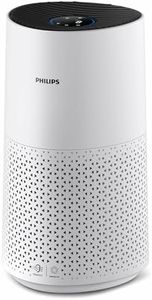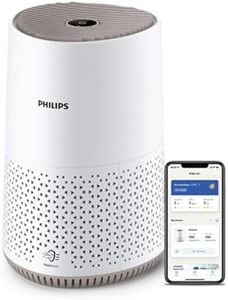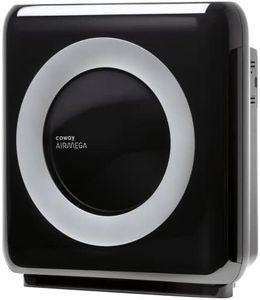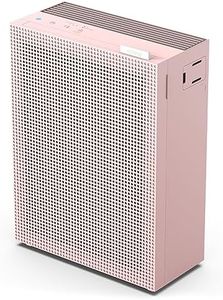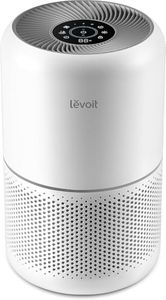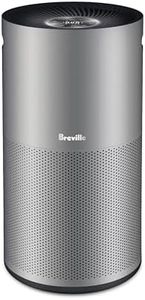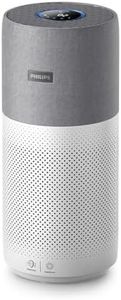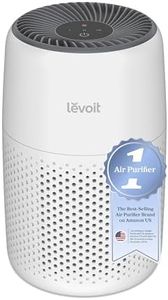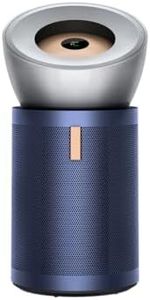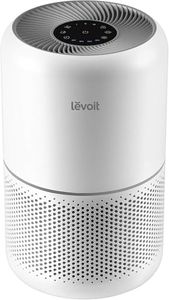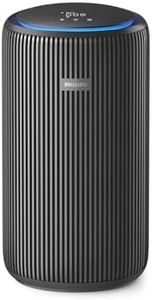We Use CookiesWe use cookies to enhance the security, performance,
functionality and for analytical and promotional activities. By continuing to browse this site you
are agreeing to our privacy policy
10 Best Air Purifier For Smokers
From leading brands and best sellers available on the web.Buying Guide for the Best Air Purifier For Smokers
Choosing an air purifier for smokers involves understanding how these devices trap and remove smoke particles and odors from the air. Smoke from cigarettes and other sources contains very fine particles and strong smells that can linger in your home. The right air purifier will help improve indoor air quality, making your living environment much more comfortable and healthy for everyone. To find the best fit, you’ll want to focus on key features that specifically address smoke removal, odor control, and the size of the space you need to purify.Filtration SystemThe filtration system is the heart of any air purifier. For smoke, a combination of HEPA (High Efficiency Particulate Air) filter and an activated carbon filter is essential. HEPA filters trap tiny particles like smoke, while activated carbon absorbs odors and chemicals. There are purifiers with only one or the other, but both are necessary for smokers. Some systems even offer extra layers or special 'smoke-fighting' filters, but at the core, a true HEPA and a thick carbon filter are musts. When deciding, check if both filters are present and ensure they are easy to replace, as smokers may need to change filters more often.
CADR (Clean Air Delivery Rate) for SmokeCADR is a measure of how quickly an air purifier can clean a given volume of air, with specific ratings for smoke, pollen, and dust. The CADR number for smoke is particularly relevant for smokers, as it tells you how efficiently the device removes smoke particles. CADR values can range from below 100 for small rooms to over 300 for large spaces. For a small bedroom, a lower CADR may suffice; for living rooms or open-plan spaces where multiple people smoke, look for higher numbers to ensure rapid and thorough cleaning. Always match the CADR to your room size for best results.
Room Size CoverageThis specification tells you the maximum room size an air purifier can cover effectively, usually expressed in square feet or square meters. Manufacturers list this so you can match the purifier to your specific room or open area. If you place a small-capacity purifier in a large room, it won’t clean the air well; conversely, a big purifier in a tiny room may be overkill. Measure the area you want cleaned and pick a model rated for a slightly larger space to ensure effective smoke removal, especially if smoking is frequent.
Filter Replacement and MaintenanceFilters need regular replacement, especially in homes with smokers. Some purifiers have indicator lights or apps to remind you, while others require manual checks. The ease and cost of replacing both HEPA and carbon filters can influence your long-term experience. If smoking is frequent, filters will get dirty faster—so choose a model with affordable, readily available replacement filters and straightforward maintenance. This makes it easier to always have your unit working at peak efficiency.
Noise LevelNoise level matters when the air purifier will run for long periods, especially at higher speeds needed to clear smoke quickly. Noise is typically measured in decibels (dB), and air purifiers can range from whisper-quiet to as loud as a normal conversation. Think about where you’ll use the purifier—bedroom users might prefer quieter models, even if that means running the device for longer, while living rooms can accommodate a bit more sound if smoke needs to be cleared fast.
Odor Removal CapabilitiesFor smokers, removing the smell is just as important as removing the particles. This function goes hand-in-hand with a good activated carbon filter, but some purifiers include extra odor absorption technologies or larger filters to handle persistent smoke smells. If the smell of smoke is a major concern for you—such as in shared spaces or homes with non-smokers—look for models that specifically highlight superior odor removal along with particle filtration.
